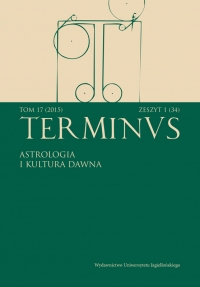Rola map i planów w działaniach taktycznych wojsk polskich i litewskich do początku
panowania Stefana Batorego
The Role of Maps and Plans in the Tactics of Polish and Lithuanian Armies until the Beginning of the Rule of Stephen Báthory
Author(s): Karol ŁopateckiSubject(s): Maps / Cartography, Military history, 16th Century, 17th Century
Published by: Wydawnictwo Uniwersytetu Jagiellońskiego
Keywords: tactics; war in the 16th century; military cartography; renaissance theoreticians of military science; large-scale maps; city plans; military engineers;
Summary/Abstract: In this paper, the author analyses cartographic activities that directly affected the course of an armed confl ict. Classic instances of such activities include the production of documents for the purposes of a siege or the preparation of an army for a battle, as well as plans of setting a military camp or the upbuilding of defence fortifications in a city or a fortress. The author analyses them in the chronological order, beginning with the earliest mentions concerning the use of maps in tactic actions until 1576. Th e fi rst theoretician to have connected cartographic activity with military tactics was Szymon Marycjusz of Pilzno. He presented his theses in a work entitled De scholis seu academiis libri duo printed in 1551. The evidence collected indicates that in the first half of the 16th century people did not know how to use cartography for tactical military purposes. Military large scale cartography had different methodological rudiments than medium scale or small scale maps. The fundamental methodological assumption in the creation of plans consisted in leaving the pictorial manner (of landscape topographic accounts) for the sake of making a circuit around the area drawn.
Journal: TERMINUS
- Issue Year: 19/2017
- Issue No: 3 (44)
- Page Range: 609-661
- Page Count: 53
- Language: Polish

